I want to create a vertical infinite scroll and after reading so many tutorials have understood that I need to subclass UICollectionViewFlowLayout. The problem is that I don't fully understand how to do so.
I've tried following: 1. Created a new class newView and assigned it to my view controller in attribute inspector custom class section.
class newView: UICollectionViewController,
UICollectionViewDataSource, UICollectionViewDelegate {
- Implemented (override) cellForItemAtIndexPath and sizeForItemAtIndexPath in this class which works fine. I have a vertical scrolling view so far containing 2 items in 1 row. But I have unequal spaces between 2 rows. After laying out first 2 items, the third one's vertical position is below the longer of the previous 2 items as shown below:

I've read many SO threads discussing and suggesting to subclass UICollectionViewFlowLayout and override layoutAttributesForElementsInRect method for desired display. But when I try to add flow layout in my view controller like below it gives me errors:
class DiscoverView: UICollectionViewController, UICollectionViewFlowLayout,
UICollectionViewDataSource, UICollectionViewDelegate {
I then thought that it's may be my view layout that needs to be subclassed instead of controller, so I tried to create a separate class like below:
class newViewLayout: UICollectionViewFlowLayout {
override func layoutAttributesForElementsInRect(rect: CGRect) -> [AnyObject]? {
return super.layoutAttributesForElementsInRect(rect)
}
And then I tried to assign this class to my view layout. But it doesn't appear under custom class section (attribute inspector). Neither does it appear in Attribute inspector > collection view > layout > set custom > Class
I know it's some very basic and silly mistake but not sure what I'm doing wrong conceptually.